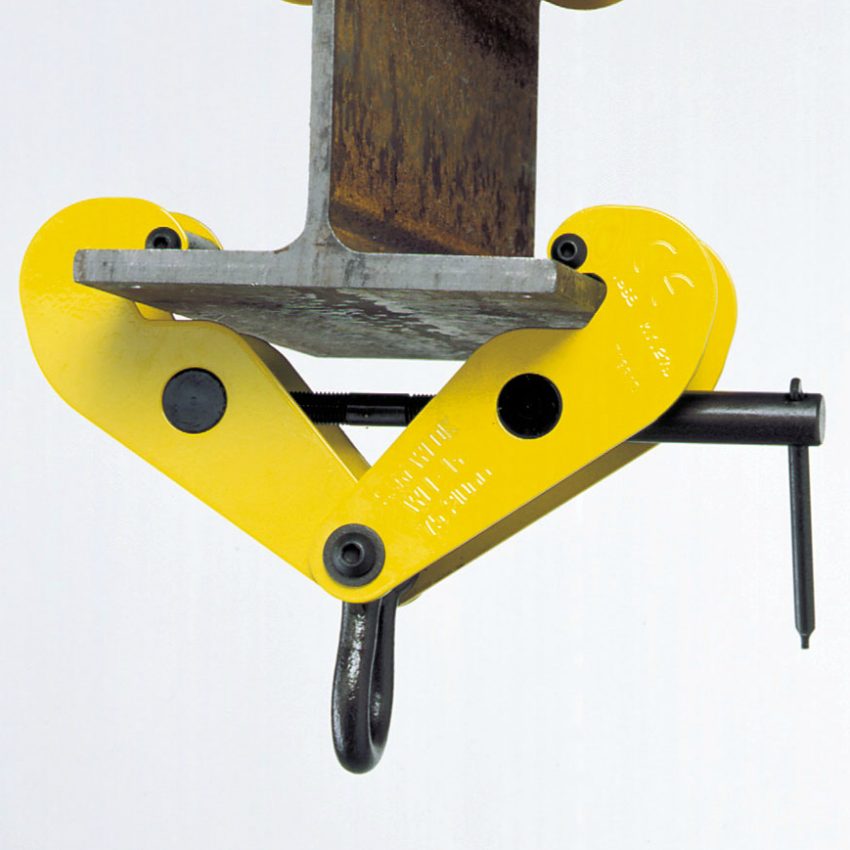Chain and lever hoists are widely used for operations that require a load to be lifted or suspended overhead. However, when load bearing beams are there, linking the hoists to the beam can pose a challenge, and that is exactly where beam clamps (for example, plate clamps) come into the picture. To safely install and put the hoists to use for your application, you must have a knowledge about the clamps.
Be it a 1 ton chain block, a 10 ton chain block or Yale 360 chain block, these super mighty tools are useless pieces of metal, as long as they are not attached to something at a higher point. And, nothing can do the job better than a clamp! A clamp is a fastening device, which is used to hold or stabilize objects tightly together to prevent the movement or separation through the application of inbound pressure.
There are many clamp manufacturers available, but you should always search for the reputed ones. For example, Camlok lifting clamps are sturdy and are popular in the market. The Camlok clamps are also affordable which give them a competitive edge in the market.
Plate clamps are designed for lifting and transferring plates such as steel sheets and other similar materials. A plate clamp can be utilized to safely and securely move plates horizontally or vertically. This tool is perfect for manufacturing and other industrial settings. Coupled with a crane hook, the clamp’s cam and jaw mechanism locks the plate in place. Although it can be used to transport certain lightweight loads, plate lifting clamps are normally used in pairs with a chain block or hoist to lift and transfer loads.
Plate clamps cancel the requirement for drilling or boring a hole. The components of a plate clamp include the lifting shackle, spring, teeth within the jaw, and the various links and pins for the purpose of attachment. To lift, the teeth of the plate clamp is pushed into the plate. The powerful spring aids to turn the lifting point of the clamp into the plate and typically joins the two objects to become one and unified.
The best thing about plate clamps is that the strength of their grip is directly proportional to the weight of the load. In other words, the heavier the load, the stronger is the grip! So, the weight of the load dictates the link tension and the link tension determines the jaw torque and ultimately the grip strength.
How to Pick the Proper Size and Type of Plate Clamp?
Opting for the proper size plate clamp will not only maximize safety but also extend the life of the plate clamp. To do this, you should invest in a clamp with the nearest working load limit (WLL) to the weight that is to be lifted. This guarantees that the jaw provides optimal clamping force and penetration. One should remember that the phrase “bigger the better” does not always apply for the plate clamps.
There are minimum load requirements because a load that is too mild will not be able to create satisfactory grip strength. That’s why, most plate clamps have both minimum and maximum load requirements mentioned on them. It is recommended that one should abstain from lifting a load that’s 20% below the rated capacity of the clamp.
End Note:
Clamps are a small and yet an integral part of the lifting operations without which no hoist can function. Before buying them, go through the specifications carefully and make sure that the product complies with the best industry standards and safety norms. Opting for a reputed brand (like Camlok plate clamps) will definitely improve the durability of the product, and save costs in the long run.

